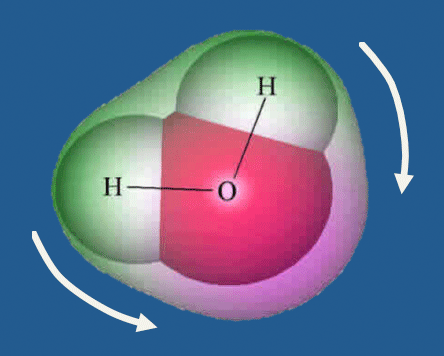|
As described in the prior Q&A, the strongly electronegative oxygen atom of a water molecule pulls away the protective electron clouds covering the hydrogen nuclei. This deshielding effect exposes the hydrogen protons to a relatively stronger local magnetic field than they would otherwise experience. Hence they resonate slightly faster than the more shielded protons in triglyceride (fat) molecules. This difference in resonance frequencies between water and fat increases with increasing magnetic field strength through a scaling factor called the chemical shift.
|
|
The chemical shift between fat and water has been measured to be approximately 3.5 parts per million (ppm). The suffix ppm is interchangeable with x10−6, just as the symbol % is interchangeable with 1/100, x0.01 or x10−2. The chemical shift is given as a ratio because the actual frequency difference (in Hz) will depend upon the applied magnetic field. Calculating the actual fat-water frequency difference is easy — you simply multiply the Larmor frequency at whatever field strength you are using by 3.5 ppm or 3.5 x 10−6. |
In a 1.5T scanner (operating at 64 MHz), the fat-water frequency difference (Δf) will therefore be
Δf = (64 MHz)(3.5 ppm) = (64 x 106 Hz)(3.5 x10−6) ≈ 220 Hz
At 3.0T where the Larmor frequency is 128 MHz, the fat-water frequency shift would be twice as large, or about 440 Hz.
Advanced Discussion (show/hide)»
|
Water molecules have two equivalent ¹H nuclei with the same chemical shift (δ=4.65). Triglycerides, however, contain at least, a dozen non-equivalent ¹H nuclei with different values of δ. The most plentiful ¹H nuclei in fat are those in methylene (−CH2−, δ=1.3) and methyl (−CH3, δ=0.9) groups. Fat thus has a broad spectrum and a single fat-water chemical shift value does not exist. Instead, a weighted average value in the range of 3.3 to 3.5 ppm is generally quoted.
|
Related Questions
What makes fat and water behave so differently on MRI?
What is meant by a chemical shift?
Please explain how and why the center frequency must be adjusted.
What makes fat and water behave so differently on MRI?
What is meant by a chemical shift?
Please explain how and why the center frequency must be adjusted.



